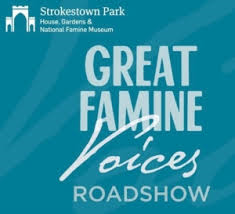Michael Lonergan is my name. I am the Deputy Irish Ambassador here in the Irish Embassy in Washington DC.
There have been Irish people in Washington DC since the very beginning. In fact, there were Irish people in Georgetown, which is the oldest part of Washington, which pre-dates the city. When the Irish community came here in larger numbers they settled in the area known as Swampoodle, which is where modern day Union Station is near the US Congress.
Famous Irish people from the early parts of Washington particularly centre around the figure of James Hoban, the architect who largely designed the White House in both its incarnations: the earlier White House, and then the second rebuilding after the British burnt it in the War of 1812.
So the Irish have been here in Washington for a long time. Of course, for a long time, as President Kennedy liked to say, DC was a town of northern charm and southern efficiency. This was a very small, largely southern town, until the 1940s; and really it was the impact of the Second World War that turned Washington into a much larger great city that it is today.
And then of course it has seen a growth in the size of the Irish population here – nothing akin to the size of our community in places like Boston and Chicago and New York. But nonetheless, there is a significant community here. Also, a significant community of Irish born people who have come here to work, particularly in institutions which the city is full of like the World Bank, the IMF, a large number of young Irish scientists working at the National Institutes of Health, Cancer Research, lecturing in universities, working in the large number of law and lobbying firms here.
So we have an interesting combination of the older Irish communities descended from those who came in the post-Famine period, and the younger, new Irish who have come. One of the great advantages of the Embassy is that we are able to hold events where we bring the two streams together, if you like: the Irish born, younger Irish here, and those descended from those who made their home in the United States for in some cases over one hundred and fifty years.
